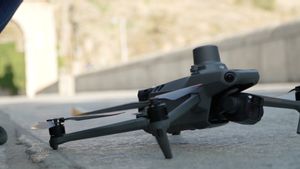JAKARTA - Jupiter is one of the scariest planets in our Solar System, and thanks to the ever-impressive work of the Juno drone, NASA has just shared a truly stunning photo.
Given that most people will never get the chance to visit space for themselves, images from NASA and other organizations are essential. While it's hard to convey the vastness of space with just words, images from Perseverance, Hubble, or other instruments make things a lot easier.
There are regular examples of this all the time. You can read articles about the massive aurora hitting Earth, but seeing pictures of its unexpected beauty is far more impactful. The same is true for all Mars exploration taking place today.
It's one thing to read about a planet that has vast sand dunes and strange rocks, but to see the actual picture of these things is completely different. Whether it's for educational purposes or a passing interest, these photos are most people's gateway to the Milky Way and beyond.
NASA uploaded its latest space image on November 10 and, simply put, it's so good you might think it's fake. What you see above is an image of Jupiter, as captured by NASA's Juno spacecraft and edited by scientist Brian Swift.
The photo was originally taken on September 2 when Juno was 16.800 miles above Jupiter's gaseous atmosphere. Juno has been orbiting Jupiter since July 2016 to do this. It orbits the planet, regularly uses the 'JunoCam' to capture high-quality images, and is fully solar-powered although it receives 25x less sunlight compared to Earth.
SEE ALSO:
Juno isn't the most talked about spacecraft in NASA's portfolio, but it really is one of the most impressive.
As for Jupiter itself, it has long been a great focal point for astronomers. It is the fifth farthest planet from the Sun and the largest planet in the Solar System. Unlike Earth or Mars, however, Jupiter does not have a solid surface. Instead, it is composed entirely of gases (mainly hydrogen and helium).
This gas composition also means Jupiter is a very stormy planet. Along with the Great Red Spot, new storms regularly appear on Jupiter and last much longer than on Earth.
This photo shows some of these storms in great detail. See that dark red spot on the planet? NASA said it was a hurricane that spanned about 250 miles. It may look small in the image, but given Jupiter's 43.441-mile radius, it's just a tiny dot among countless other storms.
That harsh environment would prevent humans from visiting Jupiter for themselves, but by looking at images like these, we can at least feel like we've gone there.
The English, Chinese, Japanese, Arabic, and French versions are automatically generated by the AI. So there may still be inaccuracies in translating, please always see Indonesian as our main language. (system supported by DigitalSiber.id)


















